Effective SEO workflows are essential for driving organic traffic. And ensuring your content is successful across the funnel.
In this guide, we will discuss:
- What SEO workflows are
- The key players involved in creating and maintaining them
- Highlighting the many benefits of using SEO workflows
- The different kinds of SEO workflows you can use.
Pro tip: Use SEO workflows and combine them with the five pillars of SEO. This makes for incredible results in most cases.
Table of contents
- What is an SEO workflow?
- Why do I need an SEO workflow?
- Who handles an organization’s SEO workflow?
- What are the benefits of using an SEO workflow?
- What are the different types of SEO workflows?
- Tools to help you manage your SEO workflows
What is an SEO workflow?
An SEO workflow is a set of steps that you can follow to achieve a specific result. These come into effect when working on SEO campaigns.
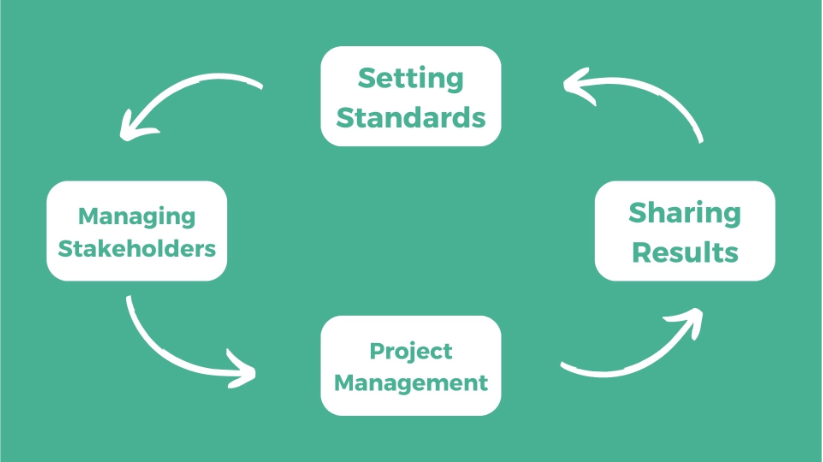
SEO workflows can be over-reaching, listing out steps for an entire SEO strategy. Or they can be more relaxed, listing different steps for each SEO tactic.
Examples of industry-standard SEO workflows include:
- Creating new content
- Publishing new content
- Optimizing existing content
- Refreshing existing content
- Running SEO tests
You can configure your SEO workflows in different ways. Some companies will have better results using a list format. And other companies will find better results using a flowchart.
In essence, an SEO workflow is a guide. It lists the steps you need to take to get to where you need to be.
Why do I need an SEO workflow?
The short answer is that you do not need an SEO workflow. But they are very useful for businesses to have in place.

Ensuring you have a good SEO workflow in place is crucial to many business types. This is because it allows them to:
- Become more efficient
- Keep processes in place no matter who is working in a team
- Train new starters in a more efficient way
The above things are crucial as an SEO team grows.
The basic principles of SEO never change:
- You still need to be publishing great content
- You still need to be building links from authoritative websites in your niche
- You still need to follow the basic principles of E-E-A-T
- You still need to have a good technical SEO foundation
Having the relevant SEO workflows in place will help keep you focused on the task at hand. That task is ranking your website and earning more revenue.
Who handles an organization’s SEO workflow?
Unfortunately, I am going to have to give the typical “SEO answer” to this question…
It depends.
It depends on a few different factors:
- The structure of your marketing team
- How many people work within your organization
- The structure of your SEO strategies
We can make the argument for one person to be responsible for creating and maintaining them.
SEO strategies include the following tasks, performed on a regular basis:
- Performing regular analysis of current campaigns and competitors
- Planning and setting-out new campaigns
- Tracking the results of past and present campaigns
- Execution of different tactics within your campaigns
An SEO Manager or a Marketing Manager should lead these tasks at the management level. If you lack an SEO Manager, use your Marketing Manager. This person may work in your company, or they may be your agency account manager if you hire an external agency.
This manager should create and maintain your SEO workflows. Some team members, like content writers and link builders, will handle their own tasks. But your SEO Manager or Marketing Manager should guide the entire campaign. And direct your SEO workflows.
What are the benefits of using an SEO workflow?
SEO workflows offer many benefits. We highlight the main ones.
Clear workflows help when you create new content, update old content, or reach out for links. Staff members, both new and current, can follow a set process. This process works if the person who first set it up leaves the company. Few people stay at the same business for their whole career. Workflows keep tasks moving.
We can review these workflows and spot steps we can remove. For example, you may find an editing step that lacks value when a new team member joins.
Your managers gain time. They spend fewer hours on small tasks and focus on key goals. This helps small companies with limited resources.
What are the different types of SEO workflows?
There are different types of SEO workflows for different businesses. Which ones you use depends on the size of the business and the sector it operates in.
Most businesses will use content in some way, shape, or form. We have decided to focus on the different content SEO workflows because of this.
New Content Workflows
Consistent publishing of new content supports a strong SEO strategy. It helps you get more clicks, reach more customers, show EEAT to Google, and build brand authority.
For this reason, you need an SEO workflow for new content. Each business will have its own steps, but you might follow a process like this:
- The team does content research and writes a brief.
- The team approves the brief.
- The writer drafts the article.
- The team reviews the first draft.
- The writer revises and creates a second draft.
- The team reviews and approves the second draft.
- The team publishes the content.
Each team member knows their role. Use a tool like Asana, Notion, or Monday to track tasks. This helps everyone stay on schedule.
Content Optimisation Workflows
Optimizing or updating content is different. You spend less time on research. The core research is already finalized. You fill gaps in search intent and content. You spend more time on optimization and distribution.
An SEO workflow for content optimization might look like this:
- Find low quality content.
- Use the SEOTesting Content Decay Report to find it.
- Identify missing content or questions.
- Use SEOTesting tools like the Striking Distance Keywords Report. Or the Questions to Answer Report.
- Conduct a content gap analysis. Check what competitors cover.
- Re-write the content. Add missing information.
- Publish the updated content. Use the same URL or a new one. Set correct redirects if you change the URL.
- Request re-indexing with Google Search Console.
- Set a test in SEOTesting or another tool. Check if clicks increase.
As with the earlier example, everyone knows their role. This helps the team work with greater efficiency and productivity.
Here is an example:
I receive approval to update a piece of content on the SEOTesting site. I open the Content Decay Report.
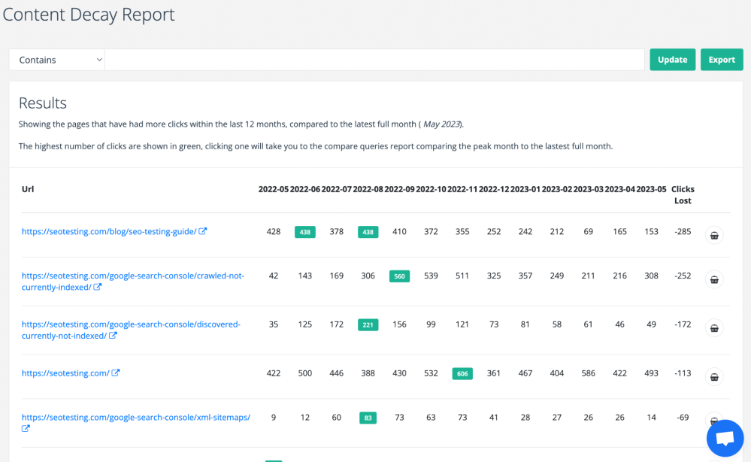
I see that our SEO testing guide lost 300 clicks over 13 months. This shows that the content needs a refresh.
I look at the Questions to Answer report.
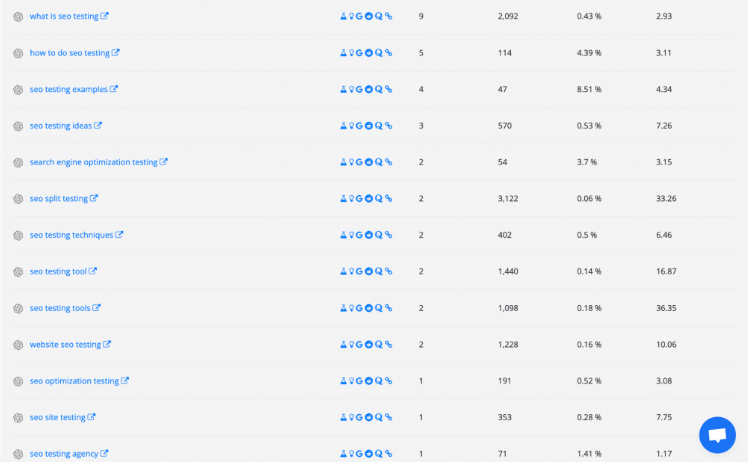
I see questions like “how to do SEO testing” and “SEO testing examples.” We rank for these, but we need a push to get more clicks. This gives me ideas on what to add.
I also check the Striking Distance Keywords report.
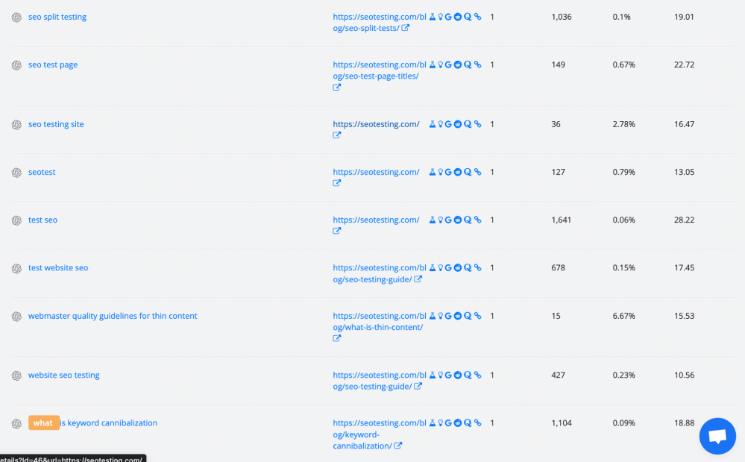
I find keywords where our guide ranks on page two. Adding these keywords or adding targeted internal links may boost the page. This helps me plan the refresh.

I run a content gap analysis.
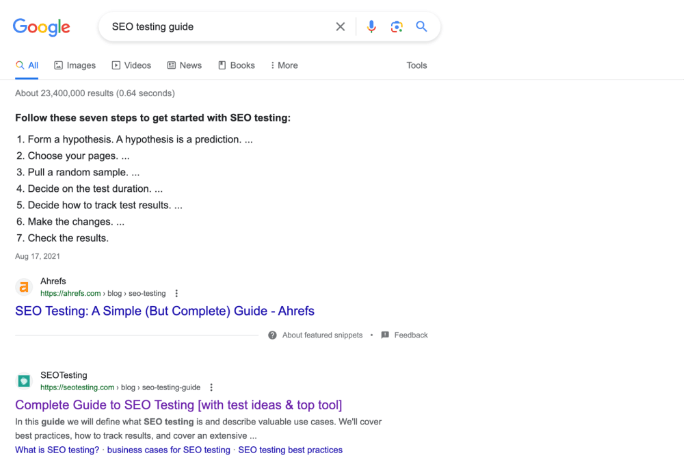
Ahrefs ranks above us for “SEO Testing Guide.” I study their content. I see what they include that we do not. I add those elements to match search intent. This may help us rank higher in the SERPs.
Using these steps, I build a stronger content refresh. This increases our chance of success in the SERPs.
After I update the content and request a re-crawl by Google, I run a test in SEOTesting. I track:
- Clicks per day
- Impressions per day
- Average page position
- Click-through rate
SEOTesting monitors the data over a set period. 6-8 weeks for a test is a good starting point. Ensuring you have at least 2 weeks of data to work with.
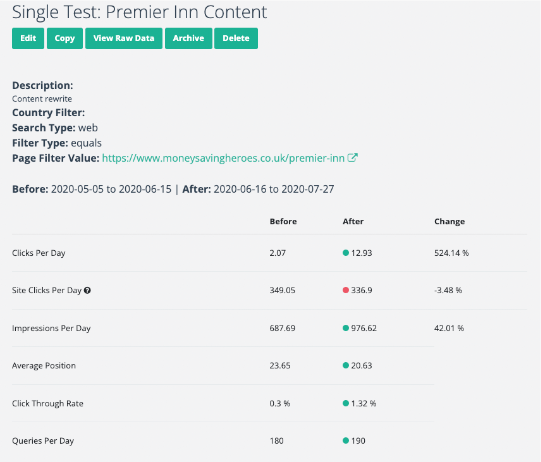
The report shows strong results. We see changes in clicks, impressions, and queries on a graph.
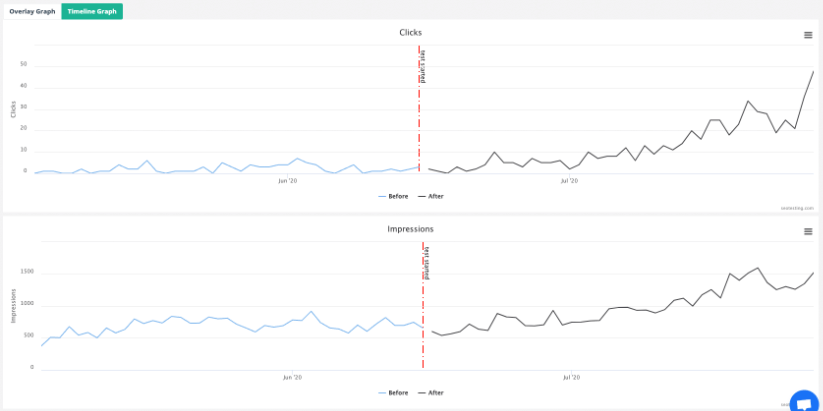
This proves the content refresh succeeded. We increased clicks per day by over 500%. We increased impressions per day by over 40%. Our click-through rate rose from 0.3% to 1.32%!
Content Quality Review Workflow
Content work in SEO often starts with reviewing all site content. You must look at both good and low-quality pieces before writing new content. Or updating old content.
Finding low-quality content is key. Once you know which pieces Google sees as poor, you can refresh them or remove them.
A simple content quality review workflow might look like this:
- Identify low-quality content.
- Decide if you will refresh or delete each piece.
- Add the refresh jobs to your content calendar.
- Complete the refresh tasks.
- Link this to your main content refresh workflow. This shows how different workflows support each other.
Here’s an example for the SEOTesting site:
I start with the Low-Quality Content Report. SEOTesting lists all pages that Google considers low in quality.
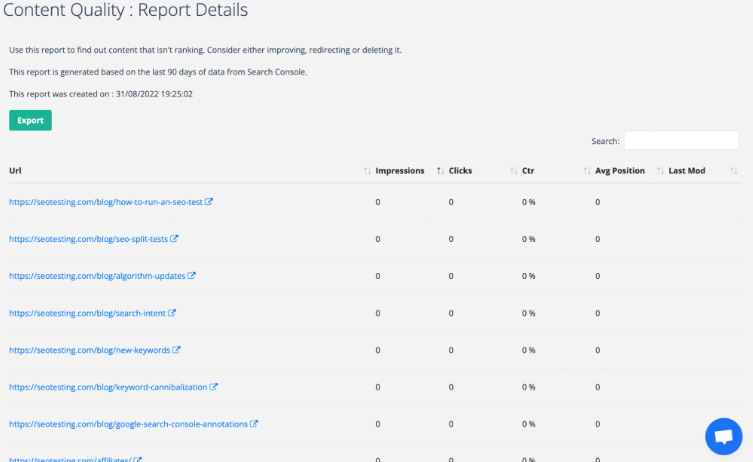
It shows me which pages did not generate clicks or impressions in the past 90 days:
- How to Run an SEO Test
- SEO Split Tests
- Algorithm Updates
- Search Intent Report
- New Keywords Report
- Keyword Cannibalization Report
- Google Search Console Annotations
I must decide if these pages need a refresh, a merge, or a deletion.

Let’s use “How to Run an SEO Test” as an example. I search its target keyword in the Nightwatch SERP Simulator.
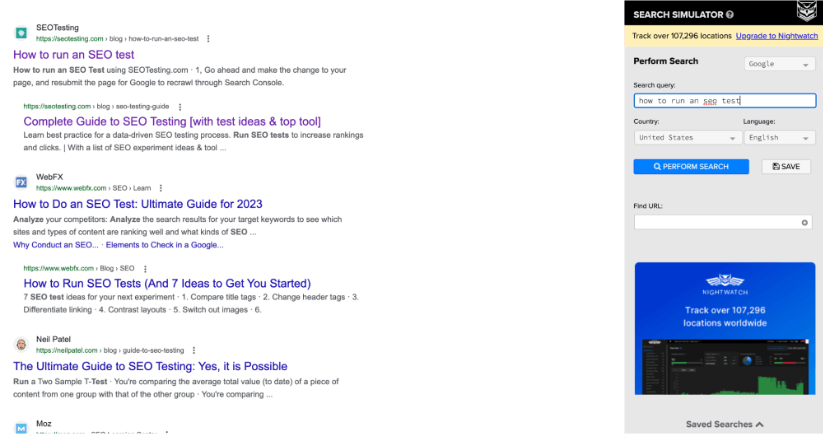
Our page ranks at Position 2 in the US.
But this page has no recent clicks or impressions. The search term seems to have no volume. Competing guides focus on general SEO testing.
The best move is to redirect this URL to our main SEO testing guide. I will add details on how to run an SEO test there. This should help us make the most of this topic.
CTR (Click Through Rate) Optimization Workflow
CTR optimization is another big part of content-based SEO. It involves adjusting meta titles, descriptions, page titles, and content. The goal is to increase click-through rates from the SERPs to the website.
A workflow for CTR optimization could look like this:
- Identify pages with a low CTR.
- Find queries with search volume to improve CTR.
- Use the SEOTesting Top Query Per Page Report.
- Compare meta titles, descriptions, and page titles with competitors.
- Re-write these meta tags.
- Publish the changes.
- Test if the changes improve CTR.
Here is an example:
I review the SEOTesting Top Query Per Page Report.
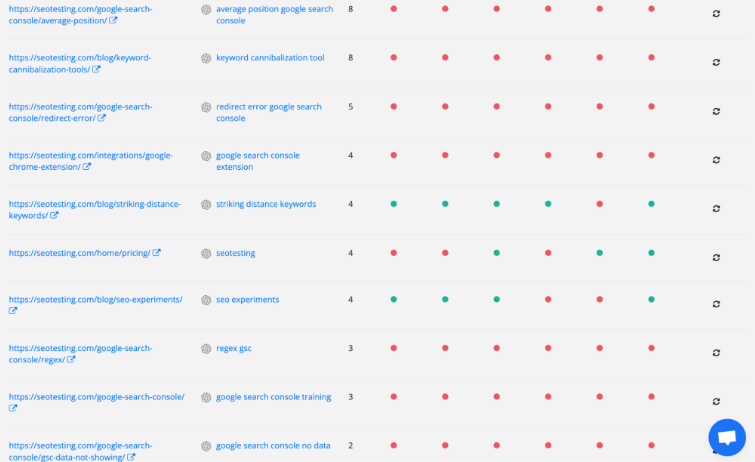
Our article on “Average Position” ranks well for “Average Position Google Search Console.” But this keyword does not appear in the page title, meta description, or headings.
This is a good chance to improve CTR.
I update the page to include the query. I set up a test in SEOTesting.
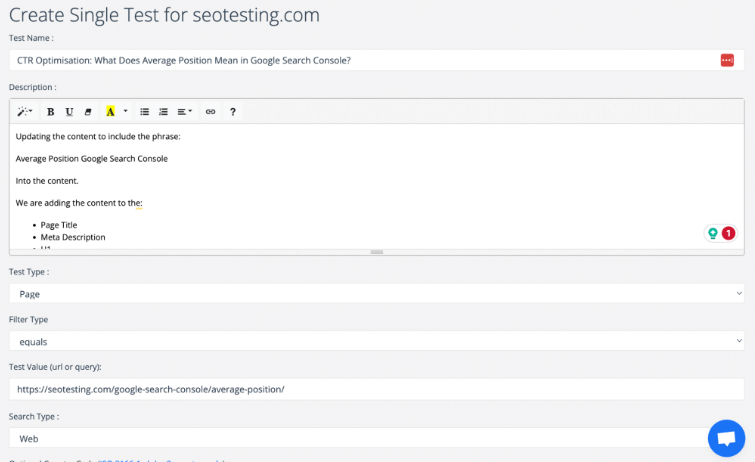
After the changes, I watch to see if CTR improves. If CTR goes up, I also expect an increase in clicks.
Content Strategy Workflows
SEO workflows are not limited to creating or updating single pieces of content. You can have an SEO workflow that guides your entire content strategy.
Within this workflow, you have details about your research stage. It shows what content you will research, who is in charge, and what you expect as a result.
You also have a plan for content distribution. How many pieces of new content will you publish each week or month? How many pieces will you update each week or month? Who will manage the content side of your SEO strategy?
A focused SEO workflow answers all these questions.
Tools to help you manage your SEO workflows.

This topic needs more space. It deserves its own post. We will cover it another time. Consider these tools, no matter what your SEO workflow looks like.
Start with a project management tool. Monday, Asana, or Trello help define steps, assign tasks, and track projects. SEOTesting use Trello. Your team may prefer a different tool.
Use a strong set of SEO tools. Ahrefs and Semrush track rankings, page positions, and backlinks. They help with content research. Pair them with Google Analytics (GA4) and Google Search Console.
Use tools that allow group work on content projects. We use Google’s suite of tools for documents. You may choose Microsoft Office with Dropbox. Select tools that fit your team’s workflow.
Wrapping things up
Effective SEO workflows help you rank higher and grow your business. They give your team a clear plan and show each person what to do. They keep projects on track and help you measure results.
Good workflows guide every part of your SEO strategy. They help with new content, updating old content, improving CTR, and more. They also help you find low-quality content and remove it or improve it.
By using the right tools, you can make these workflows easy to follow. Your team can work faster and reach your goals sooner. A good SEO workflow supports long-term growth and stronger performance in the SERPs.
Interested to see if SEOTesting can help improve your SEO workflow? Give us a try! We have a 14-day free trial with no credit card required. So sign up today and start testing now.

